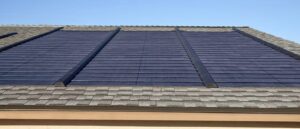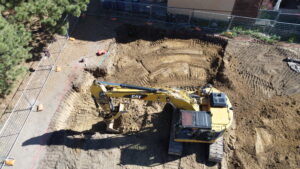Anyone who lives in the Denver area is familiar with the large difference between daytime and nighttime temperatures. Designing a home with proper solar orientation and thermal mass can help protect the interior of a home from these severe swings.
In the summer thermal mass is shaded from direct sunlight so it doesn’t get hot. This draws heat out of the air and releases it at night when the temperatures cool. This can be assisted by proper nighttime ventilation. In the winter the thermal mass can be situated so that plenty of sunlight strikes it and heats it up over the course of the day. In turn the heat is released into the home at night. This approach can go a long way towards evening out heating and cooling loads, as well as reduce them overall.
A modern twist on thermal mass is the usage of phase changing materials. In buildings a phase change material can be installed which changes state from liquid to solid at a given temperature. This typically ranges from 72-78 degrees Fahrenheit. As the ambient temperatures in the room falls the material will change states again and release the heat into the room. The material has been shown to reduce energy use by up to 30% and shift peak energy loads to later in the day.
The amount of thermal mass achieved with a phase change material depends on the type of medium the material is in. A phase changing wallboard is equivalent to about 3.5 inches of concrete whereas phase changing materials packaged in compartments on a roll of plastic claim the equivalent thermal mass of 12 inches of concrete. There is also glazing solutions that contain phase changing materials.
These materials can be very useful in a home remodel, particularly if the orientation isn’t quite right, or it simply isn’t reasonable to add thermal mass. We are currently studying this material and its application further and will keep in informed on what we find.











1 thought on “Phase Change Materials”
Hello Anthony,
PCM can also be encapsulated in thin HDPE plastic profiles:
http://www.rgees.com/products.php
This profiles can be used in different arrangement to increase building thermal mass.
This PCM is completely safe to use in the houses: non-flammable and non-toxic.
Hope this information helps.
Regards.
Comments are closed.